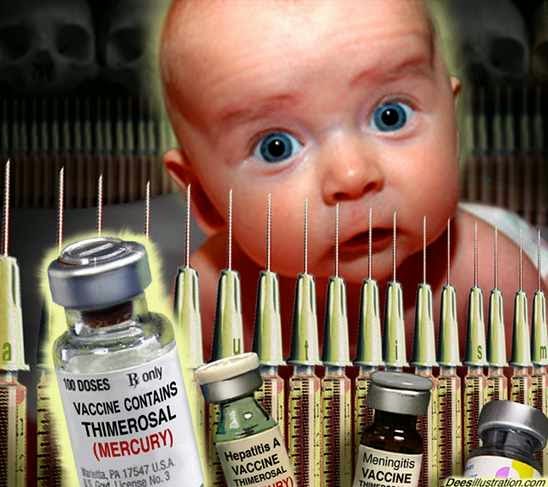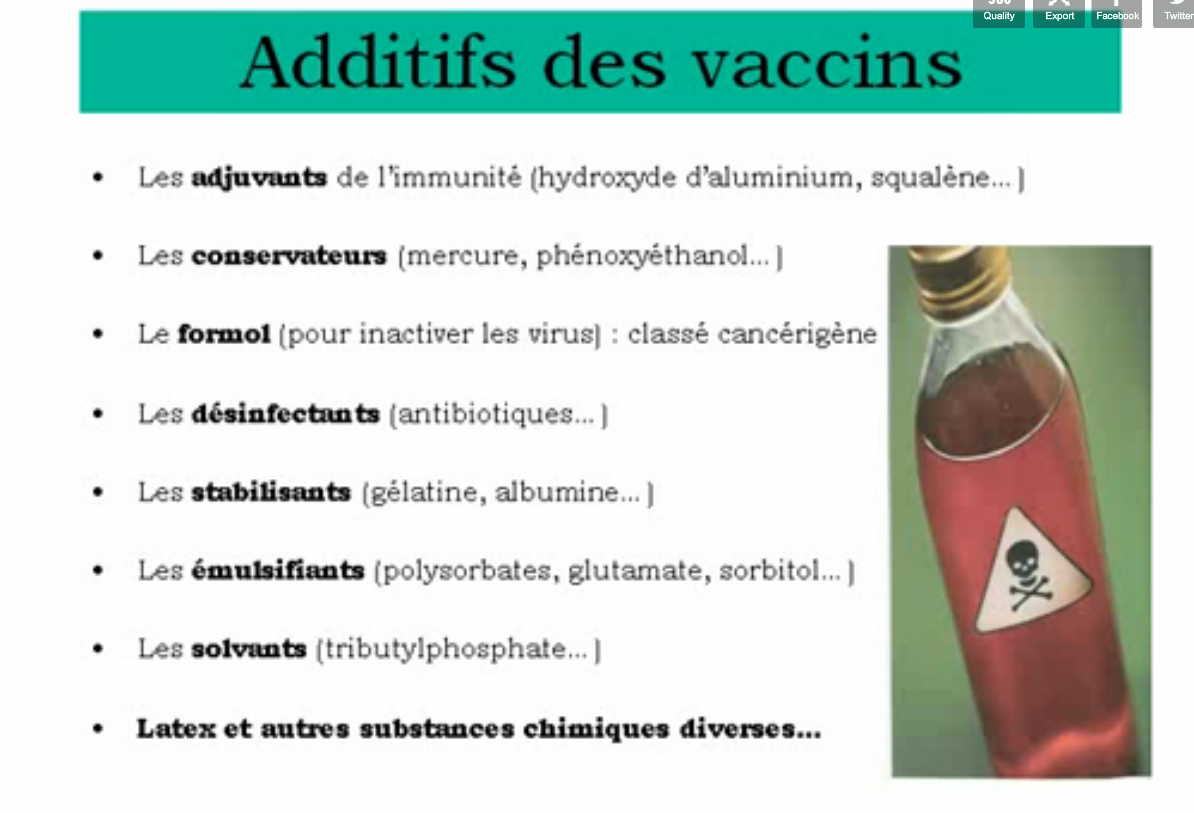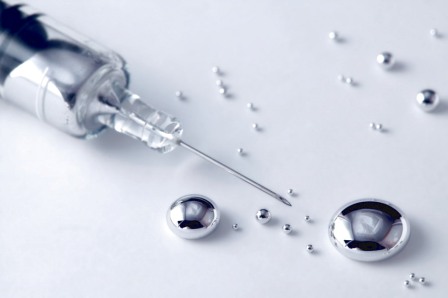30 SOLID SCIENTIFIC STUDIES THAT PROVE VACCINES CAUSE AUTISM
Leo Kanner, Johns Hopkins University, 1943
As you can see, the medical professionals testifying that there is no scientific support for the vaccine/autism causation theory are uninformed about the current state of the science. When vaccination decisions are made based on an uninformed opinion, it means serious potential damage to the patient, and because of the law preventing lawsuits for vaccine injury, it also means that the uninformed medical professionals making bad recommendations CANNOT be held accountable in any way for giving the patient bad information.
Annals of Epidemiology, September 2009
CM Gallagher, MS Goodman, Stony Brook University Medical Center
Toxicology and Applied Pharmacology, 2006
Robert Natafa, et al, Laboratoire Philippe Auguste, Paris, France
Journal of Immunotoxicology, January-March 2011
Helen V. Ratajczak, PhD
Environmental Health Perspectives, July 2006.
Samuel R. Goth, Ruth A. Chu Jeffrey P. Gregg
Exp Toxicol Pathol. 2009 Mar;61(2):133-6. Epub 2008 Sep 3.
Branch DR, Departments of Medicine and Laboratory Medicine and Pathobiology, University of Toronto
Environmental Health Perspectives, Aug 2005.
Thomas Burbacher, PhD, University of Washington
Toxicology and Applied Pharmacology, 1994
Charleston JS et al, Department of Pathology, School of Medicine, University of Washington
Annals of Neurology, Feb 2005.
Diana L. Vargas, MD [Johns Hopkins University]
Clinical Neuropsychiatry, 2005
Martha R. Herbert M.D., Ph.D., Harvard University
 Activation of Methionine Synthase by Insulin-like Growth Factor-1 and Dopamine: a Target for Neurodevelopmental Toxins and Thimerosal
Activation of Methionine Synthase by Insulin-like Growth Factor-1 and Dopamine: a Target for Neurodevelopmental Toxins and ThimerosalMolecular Psychiatry, July 2004.
Richard C. Deth, PhD [Northeastern University]
Archives of General Psychiatry, 2005
Emily Werner, PhD; Geraldine Dawson, PhD, University of Washington
Journal of Child Neurology, 2007
M. Catherine DeSoto, PhD, Robert T. Hitlan, PhD -Department of Psychology, University of Northern Iowa
Journal of Child Neurology, February 2006
Jon S. Poling, MD, PhD, Department of Neurology and Neurosurgery, Johns Hopkins Hospital
American Journal of Biochemistry and Biotechnology, 2008
Elizabeth M. Sajdel-Sulkowska, – Dept of Psychiatry, Harvard Medical School
The Neuroscientist, 2005.
Martha Herbert, MD, PhD, Harvard University
Journal of Toxicology and Environmental Health, Nov-Dec 2006.
Janet Kern, Anne Jones, Department of Psychiatry, University of Texas Southwestern Medical Center
Neurotoxicology, Jan 2005.
S. Jill James, PhD, University of Arkansas
Neuromolecular Medicine, 2007
Christopher Shaw, Ph.D., Department of Ophthalmology and Program in Neuroscience, University of British Columbia
Health & Place, 2006
Raymond F. Palmer, University of Texas Health Science Center
Environmental Health Perspectives, September, 2006
Gayle Windham, Div. of Environmental and Occupational Disease Control, California Department of Health Services
Journal of Toxicology and Environmental Health, 2007
David A. Geier, Mark R. Geier
Neuropediatrics, August 2006 – P.R. Kong
Journal of Autism and Developmental Disorders, April 2003
Mark F. Blaxill, David S. Baskin, and Walter O. Spitzer
American Journal of Biochemistry and Biotechnology 2008
J. Jay Gargus and Faiqa Imtiaz, School of Medicine, University of California, Irvine,
American Journal of Biochemistry and Biotechnology 2008
Matthew P. Anderson, Brian S. Hooker and Martha R. Herbert, Cambridge Health Alliance/Harvard Medical School/Beth Israel Deaconess Medical Center
American Journal of Biochemistry and Biotechnology
Daniel A. Rossignol, J. Jeffrey Bradstreet
Health & Place, 2008
Raymond F. Palmer et al, University of Texas Health Science Center
Developmental Medicine & Child Neurology, 2007
Guiomar Oliveira MD PhD et al, Centro de Desenvolvimento da Criança, Hospital Pediátrico de Coimbra; Assunção Ataíde BSc, Direcção Regional de Educação do Centro Coimbra;
Résultats de recherche
François de Siebenthal: Vaccins: quelques faits
7 juil. 2017 – En Europe les obligations vaccinales varient d’un pays à l’autre. “On peut parler d’une incohérence vaccinale européenne. En France le DTP seul obligatoire (sans aluminium) n’existe pas actuellement. Si vous l’avez trouvé, c’est qu’il restait un stock dans une pharmacie. La ministre fort mal renseignée et …
François de Siebenthal: Vaccins et certaines manipulations médicales
27 juin 2009 – Vaccins dangereux et un peu de perspective historique sur certaines manipulations médicales. Pas d’autistes chez les Amish Sylvie Simon Résumé : En observant attentivement la société, on peut obtenir des résultats parfois plus probants que les tests cliniques toujours pratiqués sur des nombres limités …
François de Siebenthal: Scandales H1N1 Tamiflu & vaccins
vaccins qui présentent de façon manifeste un rapport bénéfices/risques de plus en plus défavorable chaque jour, au regard des centaines de signalements, notamment en Europe et en Amérique du Nord, d’effets secondaires graves allant jusqu’à de multiples décès, qui semblent aujourd’hui être au moins dix fois plus …
François de Siebenthal: Mercure trouvé dans les vaccins
Des traces de mercure ET DES NANOPARTICULES TOXIQUES trouvées dans les vaccins testés! (Ht) En 2016, l’organisme de bienfaisance AGBUG e. V. a fait don de plusieurs milliers d’euros pour l’étude des éléments contenus dans les vaccins actuels . AGBUG a publié sur son site Web aujourd’hui les conclusions du …
08.3900 | Vaccination contre la maladie de la langue bleue | Le …
Je charge le Conseil fédéral de répondre aux questions ci-dessous, relatives à la vaccination contre la maladie de la langue bleue, aux conditions à remplir pour obtenir l’autorisation d’y procéder ainsi qu’aux effets des vaccins sur la qualité de la nourriture et sur la santé des consommateurs: 1. De quel droit l’Office …
08.3925 | Effets secondaires et autorisation de vacciner contre la …
18 déc. 2008 – Je prie le Conseil fédéral de répondre aux questions suivantes: 1. La Confédération enregistre-t-elle systématiquement les données relatives aux différents effets secondaires des vaccinscontre la fièvre catarrhale? 2. Quelle stratégie de recherche scientifique applique-t-on aux études de suivi des effets …
François de Siebenthal | Facebook
François de Siebenthal is on Facebook. Join Facebook to connect with François de Siebenthal and others you may know. Facebook gives people the power to…
François de Siebenthal – RSSing.com
10 juil. 2017 – François de Siebenthal: Vaccins et certaines manipulations médicales. desiebenthal.blogspot.com/2009/06/vaccins-et-certaines-manipulations.html. 27 juin 2009 – Vaccinsdangereux et un peu de perspective historique sur certaines manipulations médicales. Pas d’autistes chez les Amish Sylvie Simon …
François de Siebenthal – Google+ – Google Plus
©2017 Google • Privacy Policy • Terms of Service • Maps Terms. Region.. François de Siebenthal. Public. Jun 25, 2016 · François de Siebenthal: Vaccins: plaintes pénales. François de Siebenthal:Vaccins: plaintes pénales. desiebenthal.blogspot.ch. no comments. one plus one. 1. no shares. Shared publicly•View activity.



Commentaires récents